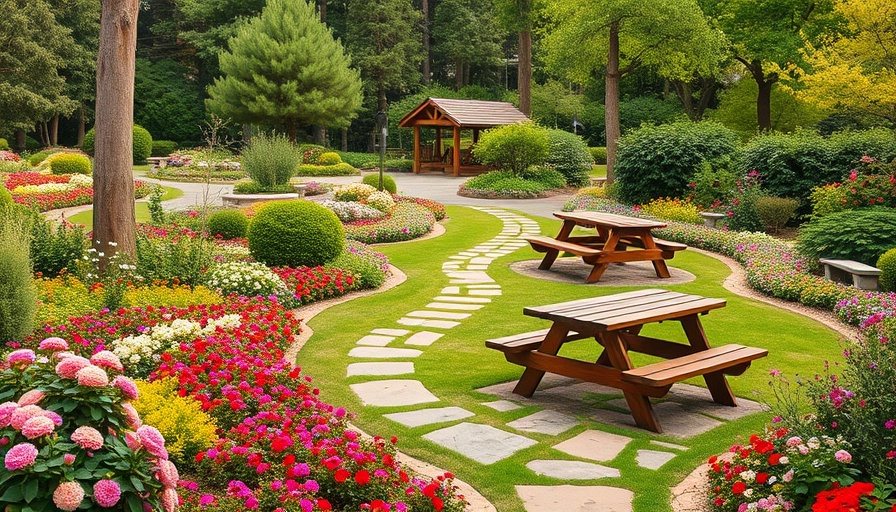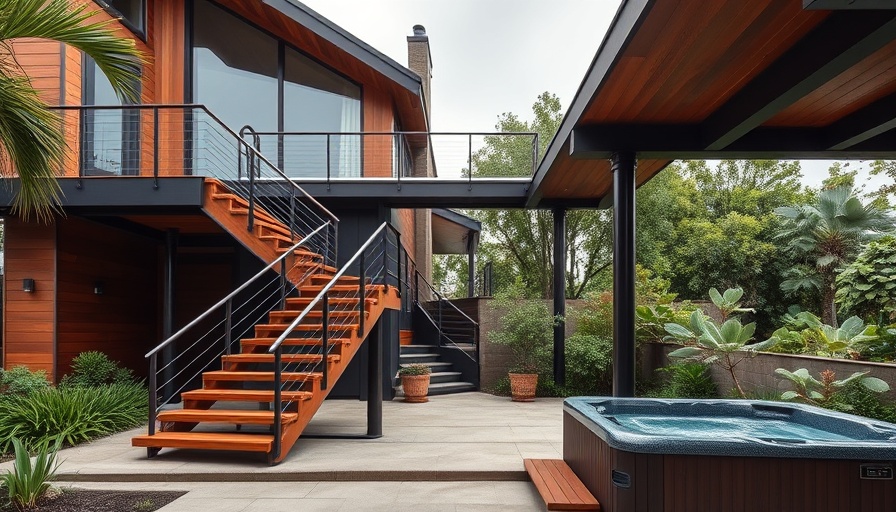
Transforming Small Spaces into Eco-Friendly Havens
The recently concluded 2025 Chelsea Flower Show showcased a plethora of innovative garden designs, especially for smaller outdoor spaces—a must for urban dwellers and those with limited backyards. It’s clear that imagination and ecological responsibility can go hand in hand, even in the tiniest of gardens. With the right elements, your modest plot or balcony can become a vibrant oasis, brimming with life and beauty.
Innovative Eco-Ideas for Compact Gardens
Among the standout features at the show was The Humble-Bee Gardeners’ "Making Life Better With Bees" balcony garden. This design emphasized the crucial role of pollinators in our ecosystems and offered solutions even for those with less space. By incorporating bee-friendly plants and creating habitats that cater to solitary bees, homeowners can play an active part in environmental conservation.
For gardeners facing space constraints, this garden proves that even minimal square footage can support ecological initiatives. In addition to floral arrangements, the design featured small trees that not only beautify the area but also enhance biodiversity.
Carbon Offset in Urban Gardens
One of the most remarkable entries, the C6 container garden designed by Joshua Fenton, introduced clever ways to capture carbon within limited areas. His approach involved three distinct strategies aimed at maximizing carbon offset: using biochar, crafting planters from charred oak, and selecting fast-growing tree and perennial varieties.
The biochar technique is particularly that it can improve soil quality while sequestering carbon for centuries. For urban dwellers, adopting such sustainable practices becomes an exciting opportunity to contribute positively to the environment while enjoying a flourishing garden.
Expanding on the Idea of Place
Urban gardens and small spaces should also reflect the surrounding environment—this practice enhances their relevance and impact. Aesthetic considerations are as vital as they are practical. Visitors noted how some gardens at Chelsea utilized native plants, which are not only beautiful but also provide essential services to local wildlife.
Moreover, integrating elements such as water features or natural pathways could create a seamless experience that connects outdoor enthusiasts to nature—even in a heavily urbanized area.
Future Trends in Gardening
Looking ahead, trends from the Chelsea Flower Show indicate a growing emphasis on sustainability and biodiversity in landscaping. As urban environments expand, the need for green spaces that serve ecological functions will be paramount. Gardeners will likely prioritize designs that not only beautify but also heal and sustain.
Urban gardening initiatives may include community projects, where residents come together to cultivate shared spaces, thus fostering social connections and environmental awareness.
Taking Action in Your Own Garden
Adopting these small-garden ideas from Chelsea can encourage all garden enthusiasts to be proactive about their outdoor spaces. Whether you’re in California or elsewhere, reflecting on the ecological impact of your garden choices is essential. Start small, perhaps with a few pots of pollinator-friendly plants or a DIY water feature that attracts local birds—these are immediate ways to enhance your garden's sustainability.
In advancing these small-scale projects, embrace the creativity of your surroundings and cultivate not just plants, but also a vibrant community spirit. Contributors to smaller gardens can take pride in their roles within a broader environmental movement while enjoying the beauty their efforts bring.
Your outdoor space has immense potential; with informed choices, it can significantly influence the environment in an immediate and localized way. So why not be bold? Explore the charm and potential of different plants and layouts, and make your garden a gleaming example of eco-friendly architecture.
 Add Row
Add Row  Add
Add 




Write A Comment